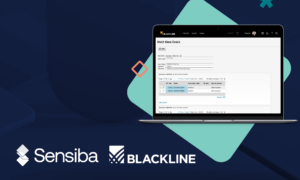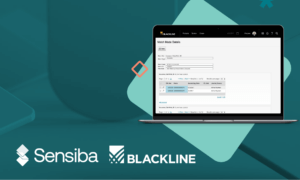Ownership consolidations, reconciliation enhancements, and streamlined processes for reviews and general ledger numbering are among the features unveiled in Sage Intacct 2023 Release 4 (R4).
The new R4 capabilities, which went live on November 10, are designed to help finance teams save time, streamline operations, and improve their efficiency.
Advanced Ownership Consolidations
One of the new features that moved to general availability in R4 is advanced ownership consolidations, which allows companies with multiple entities and currencies to combine performance results into a single report.
The new capabilities in this feature allow the consolidation of entities in which the company has partial ownership or a non-controlling interest, along with tiered ownership structures. Having these types of consolidation can save time for finance teams with complex organizations and reduce the number of calculations they need to perform as they prepare performance results.
Reconciliation Enhancements
Companies can simplify how they receive and reconcile customer payments within the bank transaction assistant by creating automatic processing rules (either in advance of, or in response to, specific payments).
Finance teams can select one or more transactions to create bulk payments and choose the method that best fits the process. If there aren’t open invoices and a company wants to receive a payment, it’s easy to generate an invoice – or an advance – with less manual intervention.
AP Approval Workflow Improvements
In the improved accounts payable workflow, submitters have the ability to recall bills waiting in the approval queue if they need to make any corrections. If, for instance, a bill is coded to an incorrect department, the submitter can recall the invoice and correct it without having to wait for the approver to decline it. This improvement will help finance teams streamline the processing of invoices with easily correctable mistakes.
General Ledger Account Editing
Sage Intacct users now have the ability to edit the numbers on their GL accounts. They can reassign specific numbers and change the character counts in their account numbers. For example, a smaller organization that started with four-digit account numbers several years ago can easily expand their GL accounts to six digits.
If a user changes a GL account or subaccount number, the system will update that account number throughout the account’s transaction history, which means the edit won’t break continuity within the accounting system.
This flexibility will be useful for companies that may be in danger of outgrowing their GL numbering system, or those that acquired another company and want to consolidate their GL entries.
Prior Period Locking
A new feature that will be helpful for publicly traded companies, and other organizations with regulated financial reporting, is the ability to lock previously closed periods after performance reports have been filed with regulators.
Before R2 of this year, companies had been able to reopen closed periods and to post adjusting journal entries. Now, having an option to lock a period prevents entries from being posted after regulatory reports have been completed. This feature provides a strong control to protect the books from alteration or errors.
Preparers can also set a maximum number of unlocked fiscal years. If a company has locked the 2022 year and has set a limit of three unlocked years, transactions can only be posted for 2023, 2024, and 2025. Once 2023 is locked, 2026 would become available.
Other new features in R4 include enhanced inventory fulfillment and control, updated 1099 e-filing, purchasing automation (in Early Adopter), and more. More details are available on the R4 release notes page.
The next update, Sage Intacct 2024 R1, is scheduled to be released on February 16, 2024.
If you’d like to learn more about Release 4’s capabilities, or the many ways Sage Intacct can help with your accounting needs, reach out to our team.
















